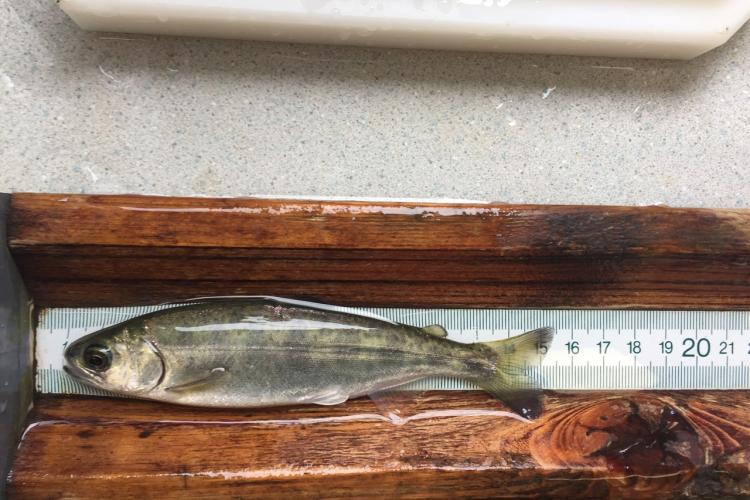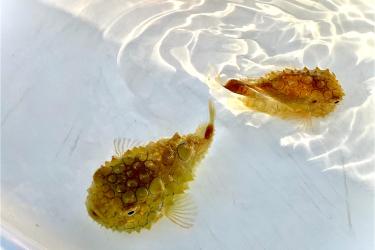NOAA’s Little Port Walter Marine Research Station is located on a small estuarine bay on southern Baranof Island, adjacent to Sashin Creek and near the open Gulf of Alaska – an ideal location for conducting research on a broad range of freshwater and marine species. In fact, it’s Alaska’s oldest year-round biological research station, operating since the 1930’s. While scientists have studied several species at the station, Chinook salmon has been their primary focus since the late 1970’s. Initially scientists examined (among other things) how various aquaculture rearing practices affected the size, oceanic distribution, and survival of different Chinook salmon stocks. They were hoping to improve Chinook salmon population enhancement programs in Alaska and increase their contributions to commercial fisheries. More recently we are using data spanning 40 years collected from Chinook reared at the station to help us learn more about how environmental variation affects salmon marine survival.>
>Our research, relies on identifying Chinook from Little Port Walter that are caught in fisheries and accurately estimating the number of fish that survive to adulthood. To track our salmon, we mark them using two methods that are commonly used in hatcheries throughout the Pacific Northwest.
![Vertical raceways, which hold the 215,000 Chinook salmon that will be observed for the study.]()
Vertical raceways, which hold the 215,000 Chinook salmon that will be observed for the study.
First, the adipose fin – the fleshy fin that’s behind the dorsal fin but just forward of the tail – is clipped, serving as an external indicator that the fish was raised in a hatchery. Second, a tiny, one-millimeter long metal tag – called a coded wire tag, or CWT – is inserted into the cartilaginous area of the fish’s nose. The coded-wire tags have six-digit numbers etched into them, and each hatchery has different numbers on their tags. Thus, the numbers on the CWTs unambiguously link each fish to their hatchery of origin.
![Coded-wire tag on the tip of my finger.]()
Coded-wire tag on the tip of my finger.
Production-focused hatcheries typically mark only 5%-20% of the salmon they release, simply because they release millions of fish annually. However, as a research-oriented facility, we mark 100% of the approximately 200,000 Chinook that are released each year. It is this complete marking that makes Little Port Walter’s long-term data set so valuable. Indeed, we can estimate the marine survival of our fish more accurately than almost any other program in Alaska. These estimates, in turn, may help forecast future Chinook salmon returns throughout the region.
Despite the widespread use of adipose clips and CWTs, it is still unclear if these two marking strategies negatively affect the chances that fish will survive to adulthood. We are initiating a study this year to address this critical gap. Specifically, we are marking three groups of fish before they are released to begin their oceanic migration: fish with both a CWT and an adipose fin clip, fish with a CWT but no adipose clip, and fish with only an adipose clip (for this last group, we’ll use genetics to identify returning adults as Little Port Walter fish). We will assess the marine survival of these three groups over subsequent years to determine if the marks have any adverse effects.





